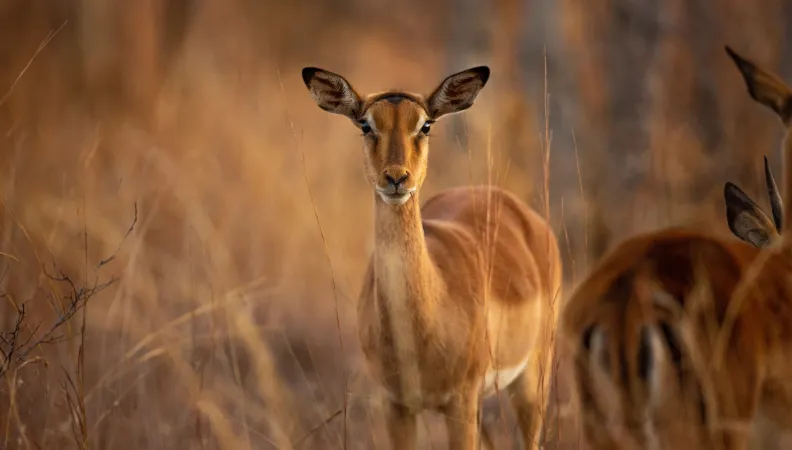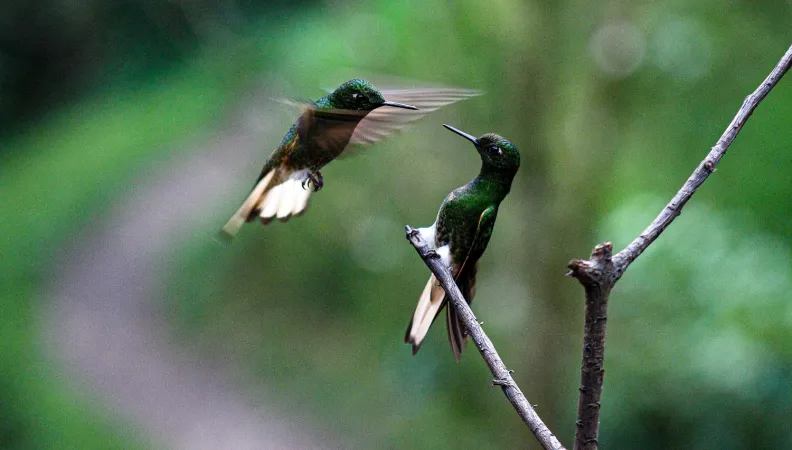 Legal notice EU (project) How do spatial variation in inequality and quality of institutions interact to explain variation in subjective wellbeing in South Africa? The EU-AFD Research Facility on Inequalities will seek to answer this question in collaboration with the University of Cape Town (UCT).
Legal notice EU (project) How do spatial variation in inequality and quality of institutions interact to explain variation in subjective wellbeing in South Africa? The EU-AFD Research Facility on Inequalities will seek to answer this question in collaboration with the University of Cape Town (UCT).
Context
Despite several efforts to promote pro-poor growth, South Africa remains one of the most unequal countries in the world. While the country's colonial history and apartheid are known to have contributed to this inequality level, the nature and dynamics of its impact on society are yet to be fully understood.
Literature suggests that better institutions and lower level of inequality improve subjective wellbeing. However, evidence that examine how the interaction between these two variables explain variation in wellbeing is relatively scarce. This study will thus contribute to a deeper understanding of inequalities in South Africa.
This project is part of the call for research proposals “Advancing the inequality agenda through collaborative research: identifying the priorities for a global Team Europe approach on inequalities”, launched by the Strategic Committee of the Research Facility on Inequalities. It is coordinated by AFD and co-financed by the European Commission, AECID and ENABEL.
Goal
This research project has two main objectives:
- Explore how variations in governance (such as audit outcomes) across South Africa's district municipalities explain the variation in the well-being of individuals.
- Investigate how the interaction between the variation in governance across local government municipalities and inequality among individuals explains variation in subjective well-being.
Method
To investigate the interactions between the quality of institutions and of the governance, the level of spatial inequality and the subjective wellbeing, researchers will use the National Income Dynamics Study (NIDS), a nationally representative survey of individuals across South Africa, which is repeated over five waves between 2008 and 2017. They will also use audit outcomes of local municipalities to proxy for the quality of governance.
Results
You will find below the different research papers related to this project:
In progress
Contact:
- Anda David, Research Officer, AFD
 The ECOPRONAT programme explores the levers for mainstreaming biodiversity into different economic sectors. As part of this research programme, AFD is working with the South African National Biodiversity Institute (SANBI) to connect agricultural and ecosystem conservation issues in an innovative way, by studying the business models of wildlife ranches as well as the levers for developing wildlife economy.
The ECOPRONAT programme explores the levers for mainstreaming biodiversity into different economic sectors. As part of this research programme, AFD is working with the South African National Biodiversity Institute (SANBI) to connect agricultural and ecosystem conservation issues in an innovative way, by studying the business models of wildlife ranches as well as the levers for developing wildlife economy.
Context
South Africa’s Department of Agriculture, Land Reform and Rural Development assists persons (or their descendants) who were excluded the formal agriculture economy on the basis of their skin colour, and who have recently begun to engage in farming with the support and assistance of the State. This broad policy is implemented through the Land Reform Programme, where Recapitalisation and Development funding (Recap) is used to help land reform beneficiaries establish viable enterprises. However, this programme remains focused on traditional models of crop and livestock systems.
The consortium of researchers assembled by the South African National Bioinformatics Institute (SANBI) argues that the Land Reform Programme would benefit from integrating the ecosystem services paradigm to help reduce inequality and understand the benefits of land transfer more holistically (Clements et al. 2021). This research consortium is working to integrate wildlife economy enterprise development within the Recap scope of investment.
More specifically, the research project focuses on wildlife ranching, which can be defined as the breeding and commercial use of wild animals for hunting, game meat production, live animal trading or ecotourism. This economic activity can be an interface between conservation and agriculture but, although anchored for many years in South Africa, it remains little studied. Decision-makers thus lack data on the functioning of this wildlife economy as well as its socio-economic and environmental impacts.
Developing knowledge and decision support tools on this wildlife economy with the support of the ECOPRONAT programme is therefore an opportunity for better management of agricultural land and natural ecosystems, for the benefit of beneficiaries of the Land Reform Programme. The survey methodology and lessons learned in South Africa will be used for exchanges with Kenyan authorities who are also conducting studies on the role of wildlife economy in that country.
This project is part of the ECOPRONAT research programme, which supports research on how to better take into account biodiversity and mainstream it into key economic sectors.
Objectives
This project aims to support the development of agricultural policies in Africa that are sustainable on the long-term, and to develop wildlife economy research in South Africa and Kenya. Through its work, the research consortium aims to produce knowledge and tools to enable a large-scale transition, going from a land use that degrades ecosystems to profitable wildlife enterprises that restore natural capital, create jobs and catalyze investment to expand conservation areas.
To this end, the project aims to:
- Develop foundational knowledge for the wildlife economy to facilitate its mainstreaming into agricultural and biodiversity public policies (production of data on business models, their viability, investment and skills development needs, etc.);
- Co-produce decision support tools that enable local actors, companies and public authorities to adapt their policies and investments and create a systemic impact;
- Create a regional community of practice to strengthen research capacity in the South and the development of the wildlife economy. Two master’s students are involved in this project, led by SANBI in partnership with the South African Universities of Rhodes, Stellenbosch and Nelson Mandela.
Method
This research project is based on participatory knowledge building (including training workshops) and on the development of survey methods to collect social, economic and ecological data. This information will be used to produce decision-support tools. In particular, a geospatial selection tool will be developed to identify the actions and investments to be undertaken.
The methodology consists of collecting data from the established wildlife ranching industries established in South Africa and Kenya, on the contributions of the wildlife industry to biodiversity, land restoration and socio-economic development. Through statistical analysis and data visualization, the team will convert this information into knowledge products to make it more accessible, and then into decision support tools to assist new and emerging farmers to create businesses in the wildlife economy and thus expand the wildlife ranching estate.
Results
The research team has published academic articles on the functioning of the wildlife economy and its socio-economic and environmental impacts:
- Clements, H.S., Child, M.F., Lindeque, L. et al. Lessons from COVID-19 for wildlife ranching in a changing world, Nature Sustainability 5, 1040–1048 (2022).
- Denner, C., Clements, H. S., Child, M. F., & De Vos, A. (2024). The diverse socioeconomic contributions of wildlife ranching, Conservation Science and Practice, 6(7), e13166.
The team collaborated with public authorities to ensure that this information could be used by local stakeholders. Their data, gathered from surveys with a representative sample of wildlife ranchers, fed into fact sheets on the wildlife economy published by South Africa’s Department of Forestry, Fisheries and the Environment (DFFE). These are available on the Biodiversity Sector Investment platform, which aims to inform South African citizens and investors interested in engaging in this type of activity.
The research has also informed local decision-making, notably in the revision of the National Biodiversity Economy Strategy and related debates on the sustainable use of biodiversity for economic purposes.
Finally, the team shared its findings with a broader audience through The Conversation Africa, analyzing how different wildlife use models can contribute to local development and the inclusion of disadvantaged communities.
Lessons learned
Several findings have emerged from this research project:
Researchers have demonstrated that wildlife-based land uses support higher biodiversity levels, citing a number of scientific studies that assess their impact in South Africa and other southern African countries. Some of these studies show that wildlife ranching can support higher densities of wild animals per hectare than conventional agriculture or livestock farming.
- Shumba, T., De Vos, A., Biggs, R., et al. (2020). Effectiveness of private land conservation areas in maintaining natural land cover and biodiversity intactness. Global Ecology and Conservation, 22, e00935.
- Taylor, W. A., Child, M. F., Lindsey, P. A., et al. (2021). South Africa’s private wildlife ranches protect globally significant populations of wild ungulates. Biodiversity and Conservation, 30(13), 4111–4135.
- Saayman, M., van der Merwe, P., & Saayman, A. (2018). The economic impact of trophy hunting in the South African wildlife industry. Global Ecology and Conservation, 16, e00510.
- Lindsey, P. A., Romanach, S. S., & Davies‐Mostert, H. T. (2009). The importance of conservancies for enhancing the value of game ranch land for large mammal conservation in southern Africa. Journal of Zoology, 277(2), 99–105.
The research team identified six primary wildlife ranching business models in South Africa, and assessed their employment potential, profitability, and socio-economic impacts:
- Three specialized models: ecotourism; trophy hunting; wildlife breeding
- Three mixed models: mixed hunting (meat and trophy); wildlife breeding combined with agriculture; trophy hunting combined with game meat production
Specialized models, particularly trophy hunting and ecotourism, tend to be more profitable and generate more high-quality jobs than mixed-use or production-focused models (e.g., game meat hunting or livestock farming):
- Employment: Ecotourism ranches employ more people per hectare and offer more skilled jobs and opportunities for women than conventional agriculture or mixed models. Trophy hunting ranches rank second in employment per hectare, although roughly one-third of these jobs are seasonal. Both models offer significant non-wage benefits to employees.
- Profitability: Trophy hunting is the most profitable model, with a median profit margin of 33%. Wildlife breeding is less profitable and contributes less to employment compared to the other two specialized models.
However, specialized models proved to be far less resilient during crises such as the COVID-19 pandemic. In contrast, mixed models—though less profitable—showed greater resilience. The volatility of the hunting and tourism sectors highlights the need for long-term studies and targeted public policy.
In general, ranches focused on ecotourism and trophy hunting stimulate local economies:
- Due to higher operating costs, they purchase more goods and services locally and support a broader ecosystem of businesses.
- They employ more women and offer better wages than conventional agriculture. For instance, in ecotourism-focused ranches, over 40% of staff are women.
- While concerns about job precarity exist, most positions are permanent—except in trophy hunting, where seasonal work is more common. Higher wages and more stable jobs help reduce economic vulnerability.
However, specialized models require large tracts of land and substantial infrastructure, which can be a barrier to entry for disadvantaged South Africans. Conversely, more accessible mixed models may enhance social inclusion and offer historically marginalized groups opportunities to participate in a wildlife economy that also supports biodiversity better than conventional farming systems.
The researchers recommend that policymakers recognize the diversity of wildlife ranching models in order to better integrate them into conservation and sustainable development strategies.
Research Papers
Contact
 Within the framework of the ECOPRONAT research programme, AFD supports the development of methodologies to assess the environmental sustainability at the level of a territory - and more particularly in Colombia and South Africa -, using the ESGAP (Environmental Sustainability Gap) framework. This framework produces a synthetic indicator based on a dashboard to monitor the state of the environment from a strong sustainability perspective.
Within the framework of the ECOPRONAT research programme, AFD supports the development of methodologies to assess the environmental sustainability at the level of a territory - and more particularly in Colombia and South Africa -, using the ESGAP (Environmental Sustainability Gap) framework. This framework produces a synthetic indicator based on a dashboard to monitor the state of the environment from a strong sustainability perspective.
Context
Public actors need to monitor the state of the environment in order to assess the effectiveness of their actions, prioritize management policies and measures, and thus objectively establish their contribution to the conservation of natural capital. To do so, they must be able to rely on science-based standards to identify the thresholds at which environmental functions can be considered sustainable.
The ESGAP (Environmental Sustainability Gap) is an innovative tool for assessing the condition of a territory’s environmental functions and how sustainable they are. For all critical components of natural capital in the territory concerned (air or water quality, pollution, forest resources, fisheries, etc.), this indicator calculates the difference between their current state and a state that would be sustainable (i.e., a state compatible with the sustainable functioning of the processes necessary for the preservation of life, human activities and well-being). This allows for the calculation of the “environmental sustainability gap”, which highlights the path to environmental sustainability. This can then serve as a guide for public policies to estimate and preserve the critical functions of the natural capital of a given territory. ESGAP has already been tested in New Caledonia, Kenya and Vietnam.
Within the framework of the ECOPRONAT research programme, AFD aims to develop methodologies for assessing strong sustainability, that is, adopting demanding criteria concerning the non-substituability of natural capital by other forms of capital (physical among others) in a territory or country. AFD also wants to promote their use in international frameworks and contribute to emerging international standards on the good ecological state of ecosystems.
Find out more about ECOPRONAT
Goal
Building on the previous work of University College London (UCL) on the application of ESGAP in countries of the Global South, this research project led by UCL aims to implement the ESGAP framework in Colombia and South Africa. It will test its relevance in fostering public policy dialogue in these two countries that already have a regulatory framework and natural resources management, but where not all data on biodiversity is available.
More specifically, this project has four objectives:
- Developing the ESGAP components related to biodiversity and the state of ecosystems that could be used by Colombian and South African governments, and promoting the use of science-based targets for ecosystem maintenance;
- Promoting reflection on strong sustainability in Colombia and South Africa through the ESGAP framework, by assessing whether the activities carried out in these countries are within the safe operating space for humanity;
- Clarifying how the ESGAP framework aligns, complements and adds value to other types of existing sustainability indicators that national governments are already using;
- Strengthening the capacity of partner countries to implement the ESGAP framework beyond this research project.
Method
The ESGAP framework is based on a dashboard that provides information on changes in the functional state of 23 components of the environment, focusing on the gaps that exist between these changes and the objectives of maintaining or achieving a "good environmental state". These components cover the 4 main categories of critical and essential environmental functions: resource provision, pollution reprocessing, biodiversity and human health. The scores for each of the twenty-three components are then aggregated to form a synthetic indicator and a dynamic indicator.
The research activities in the two pilot countries is carried out by researchers from Stellenbosch University (South Africa) and the National University of Colombia (UNAL). Capacity building will include training four postgraduate students as well as awareness-raising activities targeting policymakers and other stakeholders, in order for them to take ownership of the ESGAP and use it during public policy formulation.
Results
The research teams will produce scientific papers on the relationship between the ESGAP framework and other sustainability indicator initiatives, as well as on the work and calculations of the ESGAP indicators carried out in each country, comparing the cases of Colombia and South Africa. A specific report will be produced on indicators of the state of biodiversity and ecosystems as well as the identification of data sources for the two countries studied.
A "Research Conversations" webinar presented the results of the articles to the scientific community in November 2024:
In addition, an international workshop will be organized to present the complementarities between the ESGAP framework and relevant initiatives of existing sustainability indicators.
Finally, the research team intends to produce several documents for decision-makers and public policy actors:
- A summary of the review of biodiversity indicators and the state of ecosystems, which may be useful for negotiations at the Conferences of the Parties (COPs) to the Convention on Biological Diversity and for the design of national biodiversity strategies and action plans (NBSAPs);
- A webinar with a webinar report on the relationship between the ESGAP framework and other international sustainability reporting initiatives;
- A summary for decision-makers in each partner country on the rationale of the strong sustainability development approach and the methodology and ESGAP indicators that enable it to be implemented.
Download the publications related to the project:
- Enhancing Environmental Sustainability Through the Environmental Sustainability Gap (ESGAP) Framework in Colombia, Policy Dialogues n°67, Editions Agence française de développement, October 2024
Contact:
- Oskar Lecuyer, research officer, AFD
